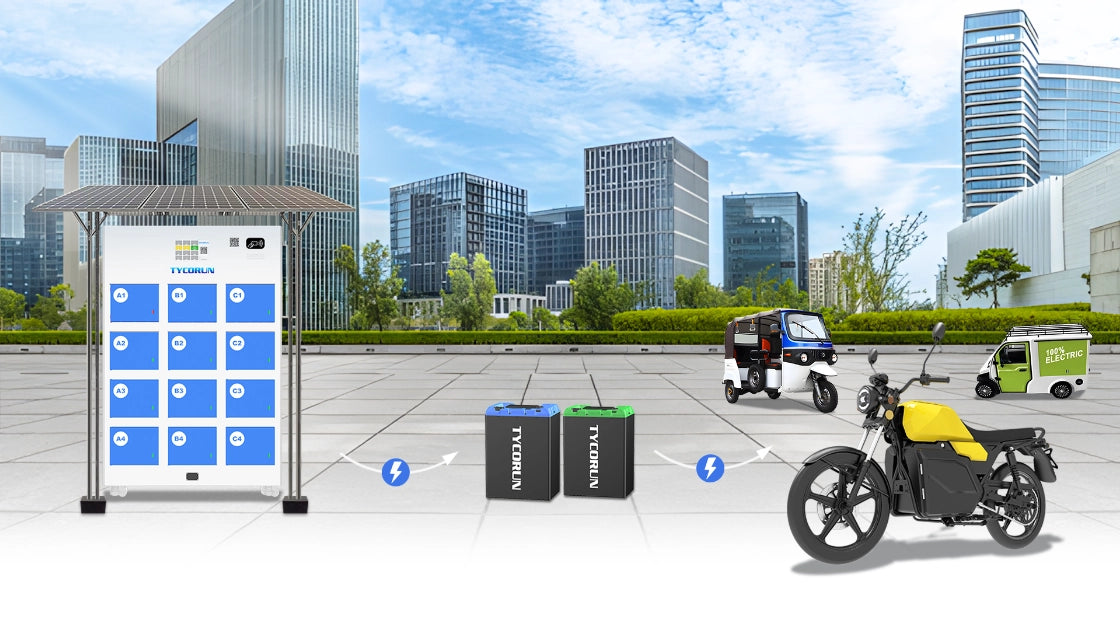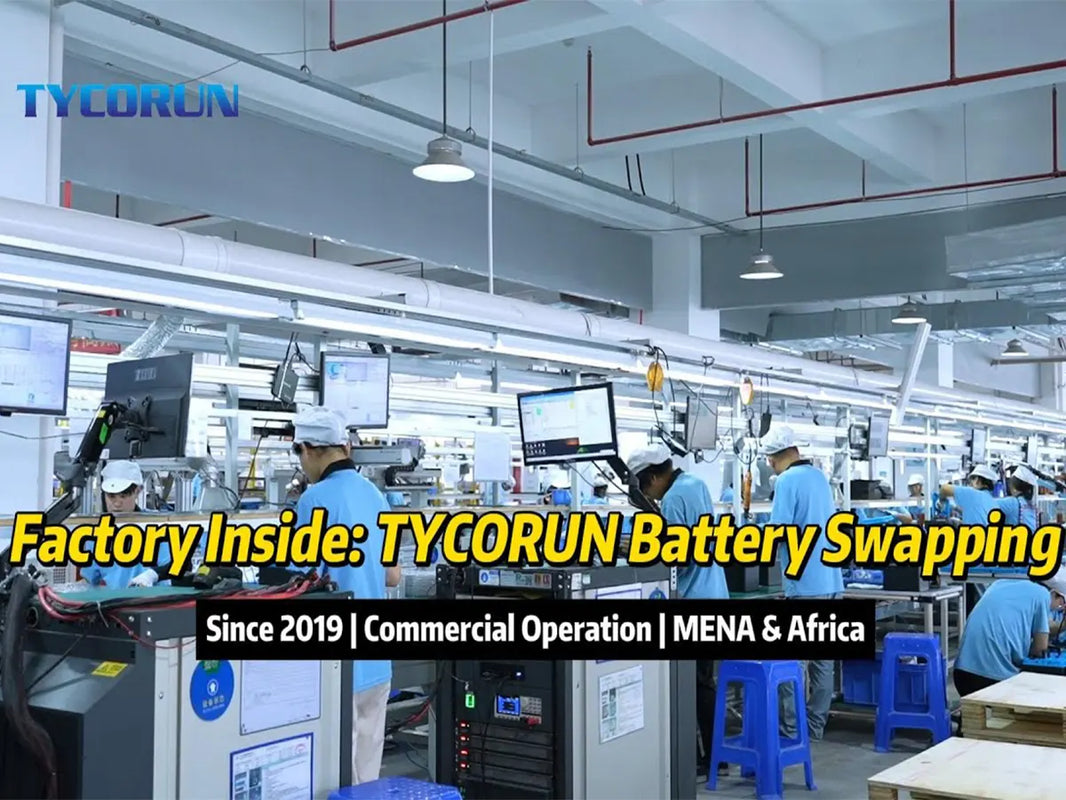
Main content:
- What Is Battery Structure?
- What Is LiFePO4 Battery Structure?
- What Materials Are Used in LiFePO4 Battery Structure?
- How LiFePO4 Batteries Store Energy?
- What Are the Advantages of LiFePO4 Battery Structure?
- What Are the Limitations of LiFePO4 Battery Structure?
- Where Is LiFePO4 Battery Used in Real Life?
- Conclusion
- FAQ
The rapid progress of energy storage technology has transformed how we use portable electronics, renewable power, and electric mobility. Among the many types of lithium-ion cells, the LiFePO4 (Lithium Iron Phosphate) battery has gained special attention for its reliability, environmental benefits, and long service life. To appreciate why it is considered one of the safest and most dependable energy storage solutions, it is essential to explore the LiFePO4 battery structure, its material composition, operating mechanism, and wide-ranging applications.
What Is Battery Structure?
Battery structure refers to the internal design and arrangement of all the components that make a battery work. It describes how the electrodes, separator, electrolyte, and casing are organized and interact to store and release electrical energy. Each type of battery whether types of lithium batteries, lead-acid, or nickel-metal hydride — has a different battery structure designed for specific performance, safety, and capacity goals. The structure determines how efficiently energy can be stored, how long the battery lasts, and how safe it is under different operating conditions.
What Is LiFePO4 Battery Structure?
The battery structure of a LiFePO4 cell is designed with both performance and safety in mind. Unlike other lithium-ion variants such as lithium cobalt oxide, the LiFePO4 battery relies on an olivine crystal structure that provides high thermal stability.

A typical cell consists of:
- Cathode (positive electrode): Lithium iron phosphate (LiFePO4) coated on aluminum foil.
- Separator: A thin polymer film that allows lithium ions to pass while blocking electrons.
- Anode (negative electrode): Graphite layered on copper foil.
- Electrolyte: A mixture of solvents, lithium salts, and additives that allow ionic transfer.
When charging, lithium ions travel from the cathode to the anode across the separator. During discharge, the process reverses. This back-and-forth ion movement is the essence of lithium-ion technology and gives the cell its rechargeable nature. The unique LiFePO4 battery structure ensures safer operation even under extreme conditions.
What Materials Are Used in LiFePO4 Battery Structure?
The battery performance of a LiFePO4 cell depends heavily on the materials used in its battery structure. Each component plays a vital role in maintaining stability, conductivity, and energy density.

1. Cathode Material
The cathode is built from lithium iron phosphate, which is either mined naturally or synthesized. Natural ore often contains impurities such as manganese, leading to poor performance, so synthetic LiFePO4 is generally preferred. Modern production techniques enhance conductivity and allow better ion diffusion, improving the overall electrochemical activity.
2. Anode Material
Graphite serves as the anode, with its layered structure well-suited for lithium-ion intercalation. However, the material faces challenges during initial charge–discharge cycles due to volume changes that may damage the electrode. To overcome this, surface modifications, coatings, and doping techniques are applied, ensuring better compatibility with the electrolyte and forming a stable solid electrolyte interphase (SEI).
3. Separator
Separators in LiFePO4 batteries are usually made from polyolefin-based films such as polypropylene (PP) and polyethylene (PE). For commercial cells, ceramic-coated membranes are widely used to increase thermal resistance. This protective layer prevents short circuits and enhances the reliability of the battery structure under high stress.
4. Electrolyte
The electrolyte typically includes carbonate solvents like EC, DMC, and DEC, combined with lithium salts such as LiPF6. Additives like vinylene carbonate (VC) improve stability and prevent side reactions. Depending on whether the application requires operation in extreme hot or cold conditions, different electrolyte formulations are adopted to optimize performance.
How LiFePO4 Batteries Store Energy?
The battery structure enables the smooth migration of lithium ions between electrodes. Here’s how the cycle works:

- Charging: Lithium ions move from the LiFePO4 cathode to the graphite anode.
- Discharging: Lithium ions return to the cathode, releasing stored electrical energy.
Because of the olivine structure of LiFePO4, the lattice remains highly stable even at elevated temperatures. This mechanism prevents runaway reactions and makes the LiFePO4 battery structure more resilient compared to other lithium-ion chemistries.
What Are the Advantages of LiFePO4 Battery Structure?
LiFePO4 batteries have earned recognition worldwide due to their structural and material benefits.
- Superior Safety:
Unlike cobalt-based batteries, LiFePO4 cells are highly resistant to overheating and will not decompose violently. Their decomposition threshold is around 600°C, significantly higher than many alternatives. - Extended Lifespan:
Thanks to the robust battery structure, cycle life often exceeds 2000 full charge-discharge cycles. In practical terms, these cells can operate reliably for 7–8 years under standard conditions. - High Energy Capacity:
With an energy density greater than 90 Wh/kg, they outperform lead-acid batteries, delivering longer run times. - Eco-Friendly:
Free from heavy and toxic metals, LiFePO4 is regarded as a “green battery.” It poses minimal environmental hazards during manufacturing and disposal. - Stable Performance:
The chemistry is less prone to overcharging or overdischarging, offering consistent performance even in demanding conditions.
What Are the Limitations of LiFePO4 Battery Structure?
Despite its benefits, the battery structure of LiFePO4 comes with trade-offs:
- Lower Tap Density: Compared with lithium cobalt oxide cells, LiFePO4 batteries have a larger volume for the same capacity, making them less ideal for micro-devices.
- Iron Impurity Risk: During production, elemental iron formation can cause micro-short circuits.
- Higher Manufacturing Cost: Synthesizing and coating LiFePO4 materials increases cost compared to other lithium chemistries.
- Poor Low-Temperature Performance: Energy output drops significantly in cold climates, which limits its use in some regions for electric mobility.
Where Is LiFePO4 Battery Used in Real Life?
The versatility of LiFePO4 comes from its balanced safety, lifespan, and performance. Its battery structure supports a range of industries:

1. Electric Vehicles (EVs)
Passenger cars, buses, logistics fleets, and low-speed electric scooters increasingly rely on LiFePO4 cells. Their lower cost and safety profile make them ideal for public transportation and delivery vehicles.
2. Starting Power Supplies
LiFePO4 can deliver strong bursts of current, replacing traditional lead-acid starter batteries. These advanced cells not only provide ignition but also support features like regenerative braking, idle stop, and coasting functions.
One of the fastest-growing uses is in stationary energy storage. Grid balancing, renewable energy integration, and backup power solutions are powered by LiFePO4 batteries. The modular nature of their battery structure makes them easy to scale, whether for household solar storage or utility-scale applications.
4. Industrial and Consumer Uses
From data centers and medical equipment to elevators and backup power for telecom towers, LiFePO4 is trusted for critical applications. It is also expanding into forklifts, e-bikes, and other emerging markets.
Conclusion
Understanding the LiFePO4 battery structure offers insight into why this chemistry is considered among the most promising for both mobile and stationary power. By examining its materials, operational mechanism, and practical advantages, it is clear that LiFePO4 has the potential to lead the energy storage revolution. From electric vehicles to renewable energy integration, the technology is expanding its influence in nearly every corner of modern life.
While challenges such as cost and cold-weather limitations remain, continuous research and innovation are closing these gaps. For industries and consumers seeking a safe, eco-friendly, and long-lasting option, LiFePO4 batteries stand out as a dependable choice with growing real-world applications.While challenges such as cost and cold-weather limitations remain, continuous research and innovation are closing these gaps. For industries and consumers seeking a safe, eco-friendly, and long-lasting option, LiFePO4 batteries stand out as a dependable choice with growing real-world applications.
FAQ
1. How long can a LiFePO4 battery last?
A LiFePO4 cell can endure over 2,000 charge–discharge cycles, equivalent to 7–10 years of regular use, depending on care and operating conditions.
2. Which is better, AGM or LiFePO4?
The Lifepo4 battery is a superior option for many applications. It has a higher energy density, longer cycle life, deeper depth of discharge, lighter weight and smaller size, better safety, and while more expensive, is a more cost-effective option in the long run.
3. Why aren't LiFePO4 batteries used in cars?
Because the maximum discharge current of most LiFePO4 batteries will not support the start of your car.
Related Articles: Lithium ion battery structure, Charging lifepo4 batteries, LiFePO4 battery safety
















